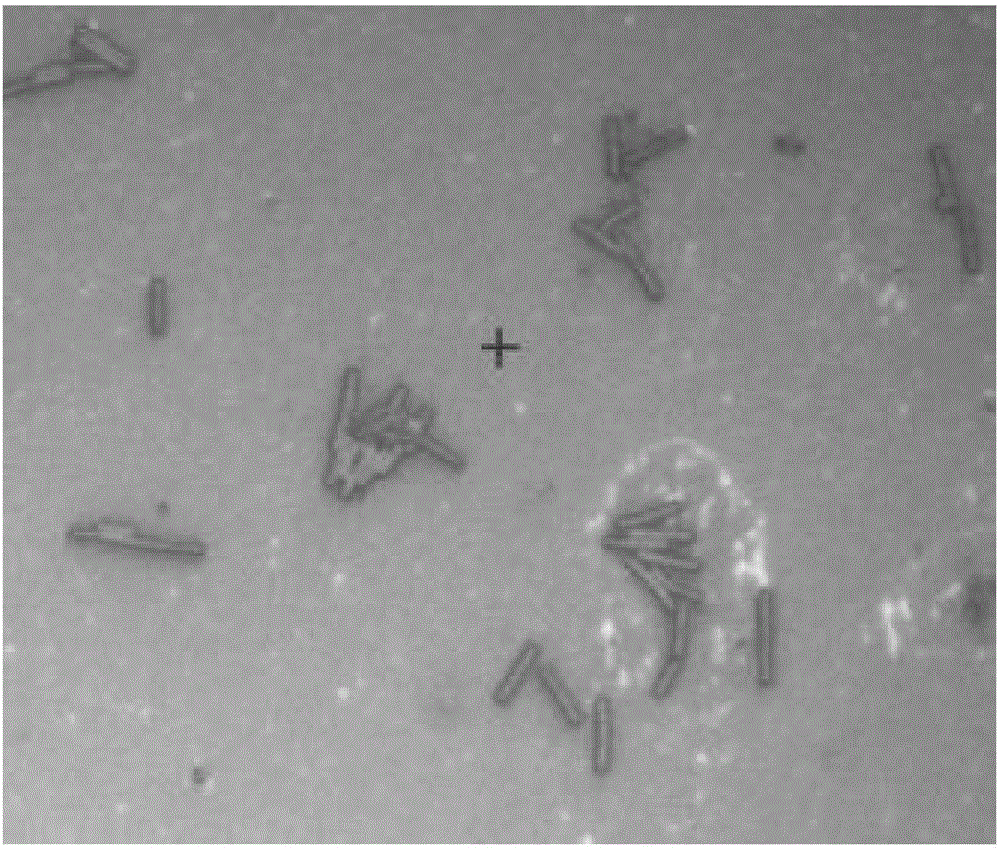Bacillus safensis and application in restoration of pollutants in open sea area
A technology of Bacillus suffolus and pollutants, applied in Bacillus suffolus and the application field of remediation of pollutants in open sea areas, can solve the problems of few demonstrations and projects, lack of microbial remediation methods and applications for sediment pollution in open sea areas, etc. , to achieve the effect of reducing the workload, ensuring the effect of delivery and repair, and increasing the probability of survival
- Summary
- Abstract
- Description
- Claims
- Application Information
AI Technical Summary
Problems solved by technology
Method used
Image
Examples
Embodiment 1
[0036] Example 1 Screening and combination of high-efficiency petroleum-degrading bacteria
[0037] Using the microorganisms in the sediments of Yantai sea area as the source of high-efficiency oil-degrading bacteria, the indigenous strains with good degradation effect on oil pollution were screened, and the bacteria liquid was mixed according to the maximum degradation effect ratio, adsorbed on the surface of zeolite, and wrapped with a film agent. Subcontract delivery to complete the bioremediation of oil pollution in sediments in designated areas of the Bohai Sea.
[0038] (1) Bacterial screening: Weigh 2g of oil-contaminated seawater sediment samples and add them to the triangular flasks containing seawater culture medium and freshwater culture medium, respectively. 1 mL of culture medium was added to the screening medium, and 30 ℃, 180r / min constant temperature shaker was shaken for 5 days, then 1 mL of culture medium was pipetted and put into the new screening medium, an...
Embodiment 2
[0051] Example 2 Microbial Restoration of Oil Pollution in Sea Area Sediments
[0052] Remediation of oil pollution in sediments in the Bohai Sea.
[0053] (1) Restoration strains: Acinetobacter calcoaceticus, Pseudomonas putida and Bacillus saffron.
[0054] (2) Strain fermentation and mixing: The three strains were fermented on a large scale, respectively, and the concentration of the bacterial liquid after fermentation was 2-3OD. After fermentation, Acinetobacter calcoaceticus, Pseudomonas putida, and Bacillus saphobia were mixed according to the bacterial colony ratio of 3:2:4, and the total bacterial volume in the mixed bacterial solution was about 1×10 9 CFU / ml, mixed and stored in a refrigerator at 4 degrees Celsius.
[0055] (3) Adsorption and wrapping of bacterial liquid: the mixed bacterial liquid is mixed and adsorbed according to the mass ratio of bacterial liquid to zeolite 2:1, and the adsorption time is 2 hours. After the water content is 60%-70%, spray 7wt% ...
Embodiment 3
[0067] Embodiment 3 The method for the degradation of petroleum hydrocarbon by bacillus suffolk
[0068] (1) Microbial strains: Bacillus saphobia (Bb);
[0069] (2) Seed cultivation: select a ring of colonies from the plate and insert it into LB medium, the volume of liquid in the shaker is 30%, the cultivation temperature is 28-30°C, the cultivation speed is 180-200 rpm, and the cultivation time is 10-16h. Centrifuge at 13,000 rpm for 5 min to collect bacterial cells;
[0070] (3) Degradation of petroleum hydrocarbons by Bb: inoculate the Bb cells collected in step (2) with an initial concentration of 1 × 108 in an inorganic salt peptone liquid medium containing 2 g / L petroleum hydrocarbons for cultivation, and use uninoculated Bb The inorganic salt peptone liquid medium containing petroleum hydrocarbon was used as a control. After 7 days, the experimental group and the control group were taken, and the remaining petroleum hydrocarbons were extracted with petroleum ether, a...
PUM
 Login to View More
Login to View More Abstract
Description
Claims
Application Information
 Login to View More
Login to View More - R&D
- Intellectual Property
- Life Sciences
- Materials
- Tech Scout
- Unparalleled Data Quality
- Higher Quality Content
- 60% Fewer Hallucinations
Browse by: Latest US Patents, China's latest patents, Technical Efficacy Thesaurus, Application Domain, Technology Topic, Popular Technical Reports.
© 2025 PatSnap. All rights reserved.Legal|Privacy policy|Modern Slavery Act Transparency Statement|Sitemap|About US| Contact US: help@patsnap.com



